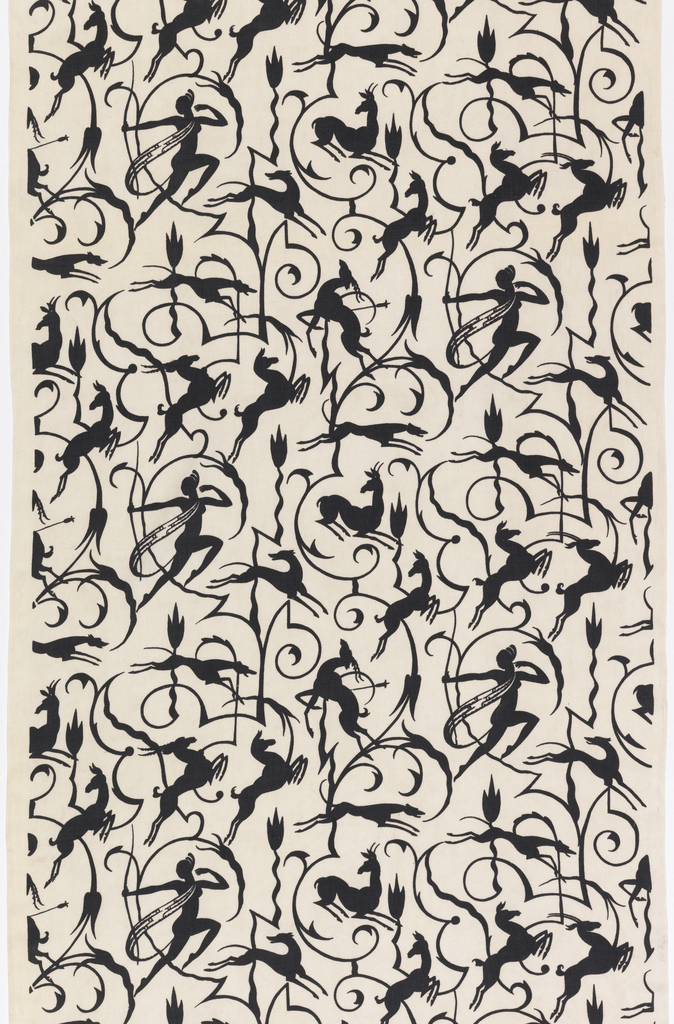If, at first glance, this textile by Thomas Lamb seems to have a mythical and classical reference at its core, that’s because it does. It may seem strange for a mid-1920s textile to embrace Diana the Huntress as its subject matter, when Art Deco, with its focus on skyscrapers and modern materials, was rapidly becoming the style of the age. But don’t be too quick to judge. This textile actually speaks largely to the period from whence it came, including the designer’s use of Diana as his central figure. In fact, the image of Diana the Huntress has been widely reproduced in art, architecture, literature, and film throughout the ages. In particular, it was relied upon a good deal in Beaux Art architecture, where references to Diana as a metaphor for commerce and the perennial hunt for profits were extremely common. This focus on commerce is one shared by much of Art Deco art and architecture, as the style emerged in the Roaring 20s, when America was booming with new industry, inspiring artists and designers to experiment with innovative materials and play with the theme of commerce and industry in their work.
Diana’s presence as a possible reference to commerce isn’t the only Art Deco element of Lamb’s work, however. The highly graphic, stylized pattern features Diana shooting backwards at an antelope, as running dogs and other prancing animals surround her from all sides. The framework of curving vines twists around the moving silhouettes in a decorative pattern that recalls the extravagant ironwork that was ubiquitous in much of Art Deco architecture.
Besides its clear Art Deco style, you can clearly see the influence of Lamb’s work as an illustrator of children’s books in this playful, bold pattern, with its almost lyrical forms that seem to dance across the weave. Lamb had a monthly page in Good Housekeeping magazine, where he often featured children and animals engaged in fantastical play. Clearly, Lamb was inspired by both the Art Deco style of the period and with playful, moving creatures, fusing both elements to generate a creative, yet modern, design.
Emily Shapiro is a Masters student in the History of Decorative Arts and Design program at the Cooper-Hewitt National Design Museum/Parsons New School for Design. She worked at the Smithsonian Center for Education and Museum Studies for two years after graduating from Brown University in 2009, and is pursuing research in 20th century fashion and interiors.

2 thoughts on “Untraditional Art Deco”
Scott Scholz on December 22, 2015 at 11:12 am
I would like to learn about Lamb’s friendships/business relationships with Paul Manship and William Hunt Dietrich. Both were in Paris at the same time as Lamb, and were good friends (Manship and Dietrich). The style of W.H.Dietrich are profound in this piece and I would not be surprised if this pattern came with strong influences from each as opposed to just the imagination of Lamb himself based on “the hunt for profit.”
J Walker on September 30, 2021 at 2:29 pm
Thank you so much I have often wondered why Diana featured in Art Deco work